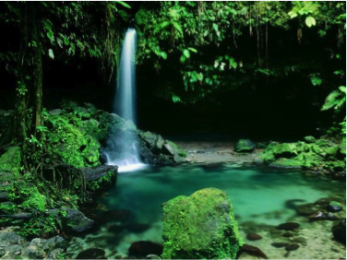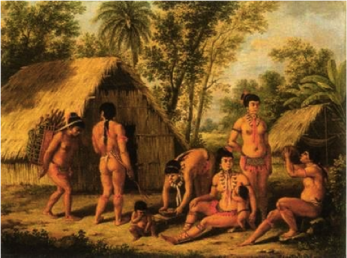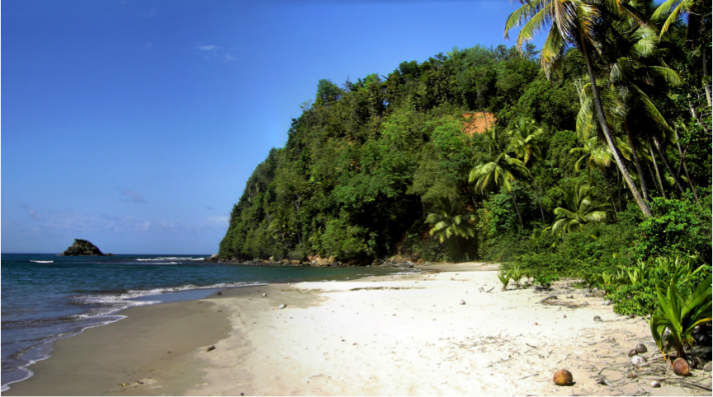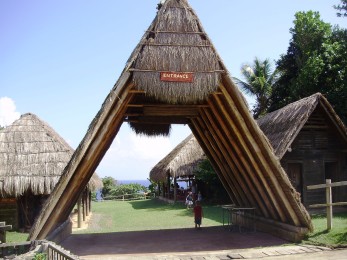Caribbean history and culture is woven together with influences from countries across the globe but the region is often seen as detached from the rest of the world. How much do we really know about the cluster of islands we call the Caribbean?
The Discovering the Caribbean series hopes to enlighten, surprise and inspire you with interesting stories and facts from across the Caribbean, so you too can appreciate and understand this unique part of the world.
Our next stop is the island of Dominica, formally known as the Commonwealth of Dominica.
In this article we will be looking at the period both before and after its officially documented discovery.
Dominica is located in the Caribbean Sea, south east of Guadeloupe. Discovered by Christopher Columbus on his second voyage to the New World, Dominica was the first island that was sighted during the trip. However, Columbus did not find a barren island: the island was in fact populated and had been for centuries. Over its history Dominica has been home to three distinct groups of indigenous people: the Caribs, the Ortoiroids and the Arawaks.
The Caribs Indians, also known as the Kalinago, were living on Dominica when Columbus arrived. Indeed, the Caribs had inhabited the island long before he discovered the island on 3rd November 1493.
Interestingly they were not the first settlers on the island: before the Caribs Dominica was home to another group of indigenous peoples known as the Arawaks, and before them the Ortoiroids.
The Ortoiroids arrived on Dominica around 2100 B.C., originating from South America. They are believed to have been hunter-gatherers, who mostly inhabited the coast of the island and relied on the ocean as their main source of sustenance, with shellfish being incorporated heavily into their diet.
Estimates suggest they populated the island until around 400 B.C. They are often credited as the first settlers of the Caribbean, but many experts claim that several smaller groups inhabited the islands beforehand: the most commonly stated are the Casimiroids. From Central America, they originated what are now the nations of Belize and Honduras.
In around 400 A.D the Arawaks came to Dominica, also migrating from South America. The Arawaks are thought to have been kind hearted and gentle by nature. In fact, they fled to Dominica to escape another South American people, the Caribs, an exodus that proved to be futile in the actual event.
The Caribs settled on several islands in Caribbean early in the 14th century, killing the Arawak warriors and stealing their women. The Caribs intermixed with the Arawaks, joining the two tribes and indirectly preventing the complete extinction of the Arawaks.
As a people, the Caribs were self-sufficient and skilled at fishing, hunting and farming. Experts believe that they were great craftsmen, making use of the forest around them.
Having successfully eradicated most of the Arawaks, the Caribs procured neighbouring islands as their own. Today their influence is evident in our accepted name for the region, the ‘Caribbean’. The Caribs even gave Dominica its first documented name: “Waitukubuli” meaning 'tall is her body’, possibly a reference to its tall mountains.
Naturally when Columbus set foot on the island a dramatic shift took place. Columbus renamed the island after the day of his discovery: dies dominica, Latin for the ‘Lord’s Day’, Sunday.
Dominica now entered global history as Columbus and the Spaniards colonised the island, attempting to claim the island as their own, though they were met with heavy resistance from the Caribs. The Spanish continued to utilise the island for its resources and geographic position throughout the early 16th century, although unremitting conflicts with the Caribs deterred permanent settlement.
The French took notice of the island in 1632 and managed to plant a small settlement on the island, establishing timber camps to supply wood to nearby French islands. However, control of Dominica shifted to another European power in the eighteenth century, when the British conquered the island in 1761.
Over the next few years France and Britain would continue to fight for the control over the island, though the Caribs were far from passive throughout this period. Despite their efforts to repel  French and English settlers, warfare and foreign diseases took their toll: the Carib population was reduced drastically from 5,000 in 1647 to just 400 in 1730.
French and English settlers, warfare and foreign diseases took their toll: the Carib population was reduced drastically from 5,000 in 1647 to just 400 in 1730.
Under this European control, significant changes were felt in Dominica’s culture, infrastructure, economy and heritage. After finally achieving independence on November 3rd 1978 the country struggled to find balance within its economic and political spheres.
Despite these profound challenges, by the 1980s Dominica had achieved stability.
Today approximately 2,000 Caribs remain on the island, mostly living in the Carib Territory in northeast Dominica. Contemporary Dominica enjoys a mix of cultures: African language, foods and customs mingle with European traditions, as well as those of the Caribs, most visible in their craft work, canoe building and traditional culinary activity.
Author: Jerome Harewood.
27th February 2015.

Pingback: Discovering the Caribbean: Dominica’s discovery | IEyeNews